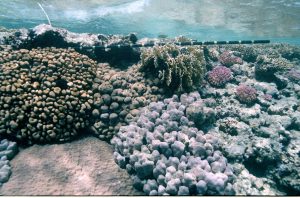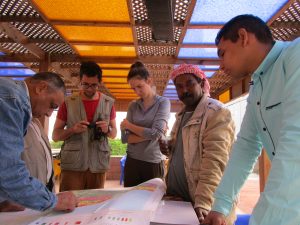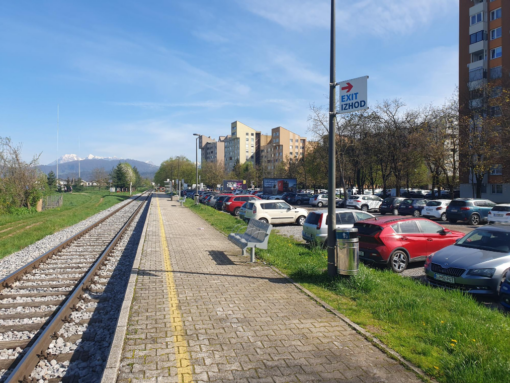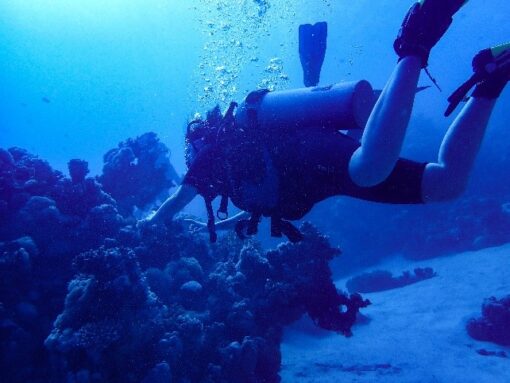Biodiversity is decreasing as a consequence of climate change – not just on land, but also in the oceans. Especially coral reefs – the rainforests of the ocean – and their associated fauna are in immediate danger. Did they ever experience anything alike in the past and how will they continue to react in the future? Scientists at the Department of Paleontology are looking for answers and training the next generation of marine scientists. Angelina Ivkić from the FWF research project “Red Sea coral reefs: A Pleistocene-Recent comparison” on how to find out if there is hope for our coral reefs.
Since my early childhood, spending all my summers on the Croatian coast, I have found the sea the most intriguing environment. Swimming and wondering what is happening in the vast depth below – there was never anything more exciting for me. Therefore, as soon as I was able to swim, I also started to snorkel. And I was not disappointed by what I found in the water: huge swarms of fish racing against each other, sea urchins grazing the ground, funny looking sea cucumbers crawling on the seafloor, hundreds of little snails on every stone and in every corner. The diversity I found has mesmerised me ever since. My natural development from there on was to get certified for scuba diving and start a career as a marine biologist. And soon I was lucky enough to dive among coral reefs – the most diverse marine spots in the world. While the diversity and beauty I found there was astonishing, I also found bleached and dead coral reefs hosting very little marine life at all. How did this happen to such an impressive structure, I asked myself. And more importantly: Is it going to continue and what will remain of our coral reefs?
The loss of an important partner

The cause of the bleaching and consequent death of corals is climate change. The emission of CO2 leads to a global increase in temperatures due to the greenhouse effect, and part of the heat is absorbed by the ocean, which also causes the ocean temperatures to rise. Consequently, corals expel their photosymbiotic partners, the zooxanthellae, which leads to the white skeleton being exposed, a process called “coral bleaching”. If the temperatures stay high and the zooxanthellae are not able to return to the coral host, the coral animal dies and only the calcified skeletons remain.
Another consequence of higher ocean temperatures is an increase in diseases that kill corals. This implies that coral reefs are at immediate risk as long as temperatures keep rising. To understand the exact responses of the corals and the time remaining to save what is left of the biodiversity hotspots of the ocean, we have to take into account biological adaptation. Corals are sometimes able to acquire new, more temperature-resistant zooxanthellae after bleaching. Furthermore, it has been suggested that they will extend their biogeographic range further north and south, where temperatures are lower than at the equator. So, is there hope for our coral reefs?
Past or future?

The past is a key element in answering this question. We can explore periods in the past with higher temperatures but similar species compositions to understand the possible behaviour of corals in the future. Were they able to adapt or did biodiversity simply decrease? Did they “move” further north or south during past warm climates? Additionally, the past allows us to determine which factors played together in the recent decrease of corals. What is the role of reef fish? How did the corals respond to increased nutrient inputs in the past?
With our FWF project we aim to answer some of these questions based for the example of the coral reefs of the Red Sea. Austrian research in the Red Sea has a long-standing history, starting with the famous diving pioneer Hans Hass in the 1940s and continuing to today. For our project, we are collaborating with international researchers to compare fossil and recent coral reefs along a latitudinal gradient in the Red Sea.

The Pleistocene interglacial period MIS5e (Eemian) around 125,000 years ago had slightly warmer temperatures than today. Therefore, the Eemian can serve as an analogue for climatic conditions expected in our recent future. At that time, coral composition was very similar to that of today. Therefore, studying the fossil coral reefs and their distribution and abundance will allow interpretations about the future of corals in the Red Sea. Moreover, we can investigate potential biogeographic shifts along a latitudinal gradient. Additionally, sediment cores will enable us to reconstruct changes that have already occurred within the last decades and centuries. Using all available information, a modelling approach will enable us to determine future areas of coral hotspots in a warmer Red Sea.
Long-term solutions
In the long run, we have to find possibilities to decrease our carbon emissions and continue to raise public awareness of the consequences of a warming climate due to anthropogenic CO2 emissions. Projects such as ours can improve the knowledge on adaptation mechanisms and determine areas that will be coral hotspots in the recent future. The protection of future hotspot areas against additional pressures such as fishing and nutrient input can increase the potential for the long-term survival of coral reefs until temperatures are reduced.
Furthermore, it is necessary to identify the coral species as precisely as possible to avoid biases that would mislead our interpretations. The principal investigator of the project, Professor Martin Zuschin, will offer lectures on coral reef biology and geology, as well as field courses to the Red Sea aimed at training the next generation of nature enthusiasts and scientists during the next semesters. For further updates and information about the project and the courses, please visit our homepage.



